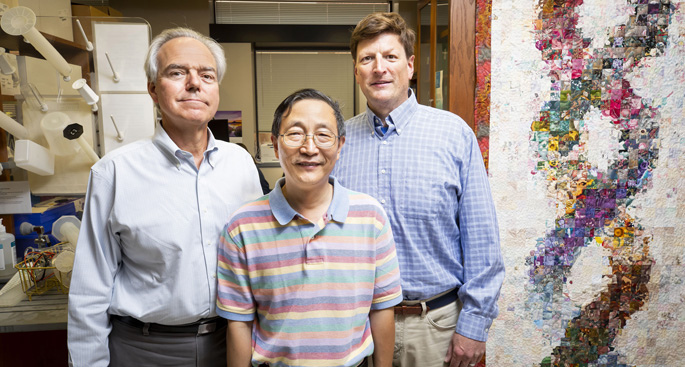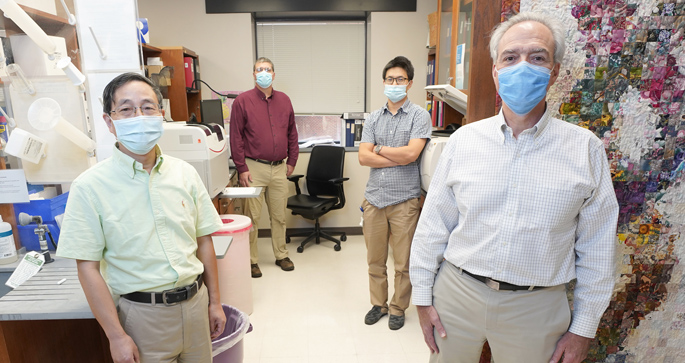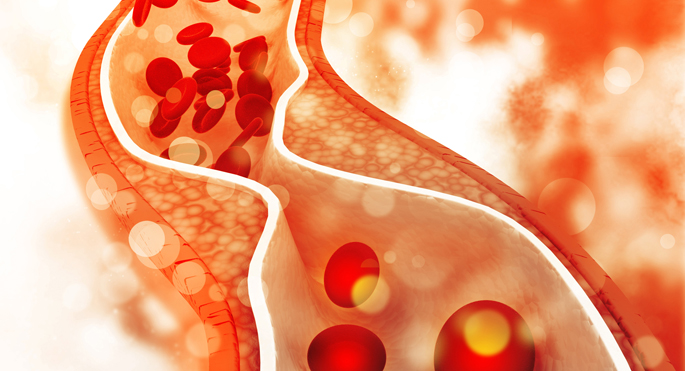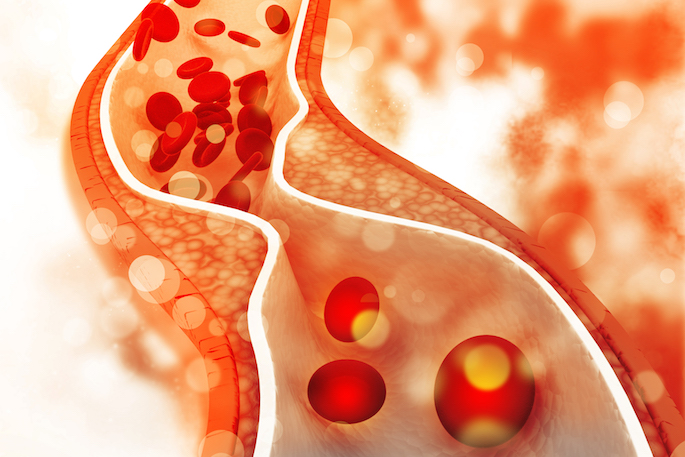
Researchers at Vanderbilt University Medical Center have identified potential new targets for the prevention of atherosclerosis through the enhancement of autophagy, a natural process for recycling damaged cellular material.
Atherosclerosis is characterized by the buildup of plaques composed of cholesterol-engorged macrophage foam cells inside artery walls. Autophagy, which degrades and recycles damaged cellular proteins and organelles, can reduce foam cell formation. But little is known about how this process is regulated in the setting of atherosclerosis.
In a recent study published in the Journal of Clinical Investigation, MacRae Linton, MD, and colleagues demonstrate that SR-B1, a scavenger receptor in the macrophage membrane that facilitates cholesterol uptake and transport, also regulates autophagy in macrophages.
Linton, the Dr. Stephen Schillig Jr. and Mary Schillig Professor of Medicine and professor of Pharmacology, directs the Atherosclerosis Research Unit and the Vanderbilt Lipid Clinic & Laboratory.
“Heart attack and stroke remain the top causes of death in the USA,” he said. “There has been tremendous success in preventing cardiovascular events by lowering cholesterol with statins.
“However, residual risk due to inflammation and other unaddressed risk factors remains. Therefore, identifying new therapeutic targets that stimulate autophagy in the context of atherosclerosis has the potential to reduce the development of atherosclerosis by reducing residual risk related to both cholesterol and inflammation.
“Autophagy means ‘self-eating,’” Linton continued. “When a cell is starving or stressed, it has to prioritize the destruction of proteins, lipids and organelles to maximize the chance for survival.”
Because this complex and elegant system by which cells prioritize the destruction of damaged parts sits at the interface between cholesterol trafficking and inflammation in the cell, autophagy is a potential target for treating atherosclerosis, he said.
By identifying factors that “turn up” autophagy, Linton and his colleagues hope to identify potential new ways to “turn down” atherosclerosis.
SR-B1 is one such target. The researchers found that deletion of the receptor in hypercholesterolemic mice caused reduced autophagy, and increased foam cell formation, the expression of inflammatory cytokines and apoptosis (programmed cell death), which promoted atherosclerosis.
At the molecular level, SR-B1 deletion reduced transcription of the gene for transcription factor EB (TFEB), a master regulator of autophagy, by decreasing the activation of peroxisome proliferator-activated receptor alpha. PPAR-alpha is a major regulator of lipid metabolism.
Reduced Tfeb transcription, in turn, resulted in decreased expression of autophagy genes encoding VPS (vacuolar protein sorting) 34 and Beclin-1. Overexpression of the Tfeb or Vps34 genes rescued the defective autophagy in SR-B1-deficient macrophages.
Understanding how this complex system works is key to identifying potential new treatments for heart disease, Linton said.
Co-authors of the paper are Huan Tao, MD, PhD, Patricia Yancey, PhD, John Blakemore, Youmin Zhang, Lei Ding, W. Gray Jerome, PhD, Jonathan Brown, MD, and Kasey Vickers, PhD.
Funding was provided through National Institutes of Health grants HL127173, HL148137, HL146134, HL116263 and DK059637.















